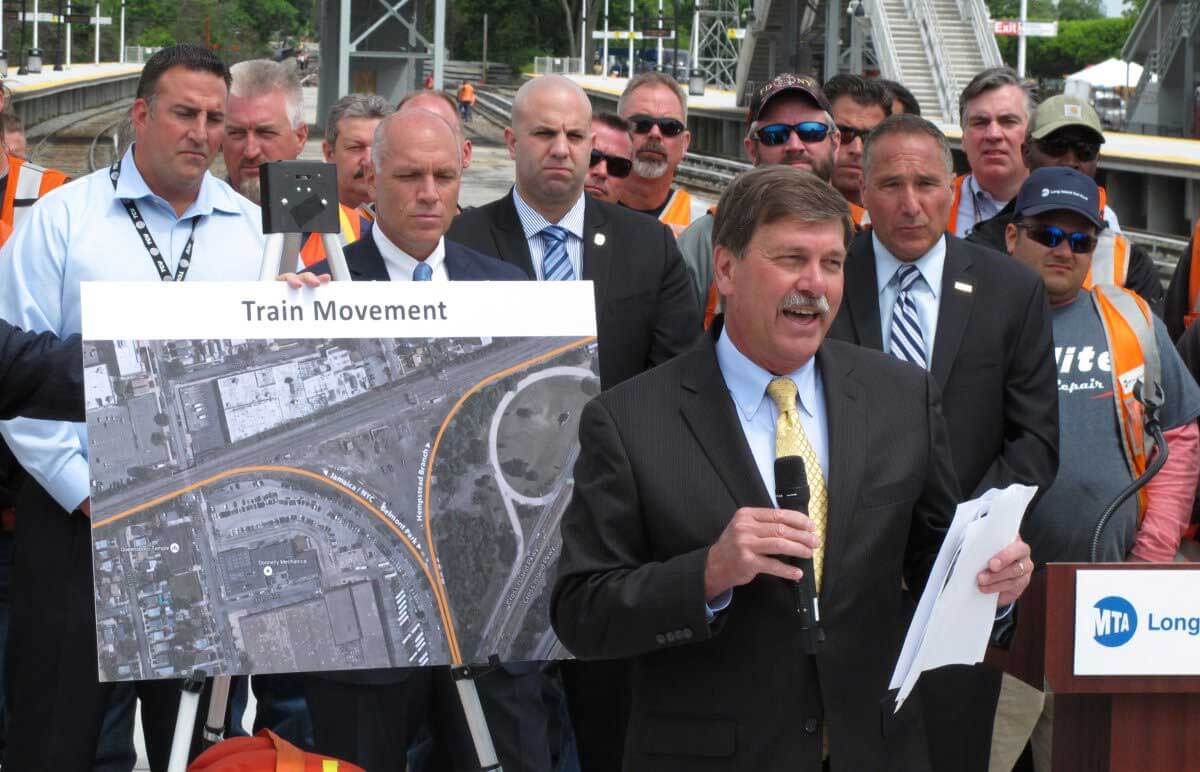By Mark Hallum
Long Island Rail Road President Patrick Nowakowski announced Thursday he will be stepping down on April 13, just weeks after a state report claimed commuter service was at its lowest performance rate in nearly two decades.
Nowakowski served as LIRR president for about four years.
But while he has decided to step aside to allow for new leadership, other MTA officials recognized his leadership during the “Summer of Hell” when rail infrastructure in Penn Station shut down 20 percent of the transit hub’s capacity.
“I took a few days off to think about things,” Nowakoski said April 12. “I’m pleased with the direction the railroad is headed under the Performance Improvement Plan, and I decided that now was a good time to step aside and allow new leadership to continue the progress we’ve begun to make on improving customer service.”
The MTA said engineer and former Chief Operating Officer for the state agency Phillip Eng will take over as LIRR president.
A report by state Comptroller Thomas DiNapoli claims the Long Island Rail Road had the worst on-time performance in nearly two decades in 2017.
With up to 9.2 million riders inconvenienced, the regional economy sustained about a $75 million loss in productivity throughout the year, with an on-time performance of 91.4 percent, which has not been seen since 1999, according to DiNapoli.
“I thank Pat for his service to LIRR customers and his steady and evenhanded leadership of the railroad at a time when external events caused challenges for the railroad, particularly Amtrak’s renewal of tracks and infrastructure at Penn Station that the entire LIRR depends on,” MTA Chair Joseph Lhota said.
Although 2017 was the saw the worst performance in 18 years, January 2018 was the worst month for the LIRR in 22 years. Blizzards and exceedingly cold temperatures shrunk the already suffering on-time performance down to 83.9 percent.
February was a better month for the LIRR with a performance rate of 93 percent, but that number was still below the agency’s goal of 94 percent.
The transit agency was well prepared for the “Summer of Hell” and the biggest setbacks came during the autumn and winter months when leaves on the tracks caused skidding and additional wear on train wheels which required service, according to LIRR board members at a January meeting.
Up to 210 train cars had to be removed from service in early December because wheels flattened out from leaf residue with cold, dewy conditions, causing the trains to skid as the brakes were applied. A secondary examination revealed that 157 additional cars needed repairs for flat wheels, Nowakowski said in January.
Trains were taken out of service so wheels be rounded out on a lathe.
“We suffered a tremendous number of train cancellations over a several-week period,” Nowakowski said at the January meeting. “We operated with a number of trains short of cars, which caused severe crowding on the trains that were able to run.”
DiNapoli’s report also reproached LIRR leadership for blaming customers for increased dwell time at stations with overcrowding due to special events and shorter platforms, meaning customers held the train while they walked through cars that met the platform.
Reach reporter Mark Hallum by e-mail at mhall































